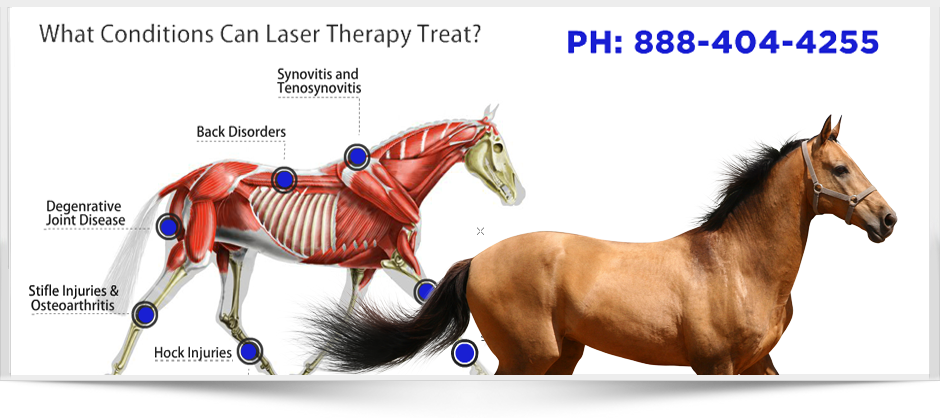Equine Therapy Success Stories: Actual Individuals, Real Emotional Improvements
Equine Therapy Success Stories: Actual Individuals, Real Emotional Improvements
Blog Article
Exploring the Advantages of Laser Therapy in Horse Treatment for Improved Recovery
The advent of laser treatment in equine therapy presents an encouraging avenue for enhancing recuperation and total health. Particularly reliable for soft tissue injuries, laser treatment also plays a considerable function in handling chronic pain and boosting blood flow. Its ability to increase collagen production even more adds to cells integrity.
Just How Laser Treatment Works
Laser therapy, an advanced modality in equine treatment, operates by emitting certain wavelengths of light to permeate cells and promote mobile processes. This sophisticated modern technology uses the power of photons to engage with chromophores within the cells, triggering photochemical responses that enhance mobile metabolic process. The primary system involves the absorption of light by mitochondrial chromophores, causing raised production of adenosine triphosphate (ATP), the cell's power currency.
The elevation in ATP levels accelerates various biological procedures, consisting of improved healthy protein synthesis and cell proliferation. Additionally, laser treatment modulates inflammatory responses by lowering pro-inflammatory cytokines and raising anti-inflammatory cytokines. This double action helps in minimizing pain and promoting tissue repair.

Benefits for Soft Cells Injuries
When resolving soft cells injuries in equines, laser therapy uses a plethora of advantages that considerably improve recuperation results. Soft tissue injuries, encompassing ligaments, ligaments, and muscles, are usual in equine professional athletes and typically need comprehensive recovery durations. Laser treatment, or photobiomodulation, advertises mobile regeneration and enhances cells repair work by stimulating mitochondrial task, therefore increasing the natural healing procedure.
One of the key advantages of laser therapy is its capability to decrease swelling. By targeting the damaged location with certain wavelengths, laser treatment alleviates the inflammatory reaction, reducing swelling and associated pain. This anti-inflammatory impact is essential in managing the initial stages of injury, where too much inflammation can restrain healing.

Furthermore, laser therapy boosts the manufacturing of collagen, an important healthy protein for preserving the integrity and flexibility of soft tissues. Increased collagen synthesis increases the repair work of broken frameworks, decreasing the risk of reinjury. Subsequently, laser treatment offers a non-invasive, drug-free remedy for accelerating the rehabilitation Check This Out of soft cells injuries in equines.
Handling Persistent Pain
In the world of equine health care, taking care of chronic discomfort presents a significant obstacle, commonly requiring complex methods for reliable treatment. Chronic discomfort in horses can originate from a variety of resources, including arthritis, laminitis, and various other degenerative conditions. Typical administration approaches, such as anti-inflammatory medicines and physical treatment, have their benefits but can be limited by side results and inconsistent efficiency.
Laser therapy has actually become an encouraging adjunctive treatment for taking care of chronic discomfort in equines. This non-invasive modality makes use of specific wavelengths of light to permeate tissues, promoting cellular repair and reducing swelling. By boosting microcirculation and stimulating the launch of endorphins, laser therapy can provide considerable discomfort relief without the damaging effects generally connected with drugs.
The capacity to target certain pain sites specifically makes laser treatment a flexible tool in the extensive pain monitoring toolbox. As research study continues to evolve, the assimilation of laser treatment in equine chronic pain management holds substantial capacity for enhancing the quality of life for influenced steeds.
Enhancing Recovery Times
Structure on the promising end results observed hurting monitoring, laser therapy additionally shows significant possibility in enhancing recuperation times for equine patients. This technique works by speeding up mobile regeneration and enhancing blood circulation, which are critical consider the recovery process. The application of laser therapy boosts the manufacturing of adenosine triphosphate (ATP), consequently enhancing the energy readily available for mobile repair work and decreasing swelling.
Professional studies have shown that steeds treated with laser therapy display quicker recuperation from musculoskeletal injuries, medical treatments, and soft cells damages. The decrease in swelling and discomfort not only aids in faster tissue fixing but also permits for earlier and more effective rehab workouts. This is especially advantageous for performance steeds, where lessening downtime is important for YOURURL.com maintaining competitive schedules.
Furthermore, laser therapy Our site can be precisely targeted to specific injury sites, making certain that the healing impacts are local and potent. This precision reduces the possibility of adverse effects and promotes more regular recuperation results. As a result, equine veterinarians are increasingly incorporating laser treatment right into their treatment protocols, identifying its efficiency in accelerating healing times and enhancing the overall recovery process for equine clients.
Improving Overall Well-being
As laser treatment proceeds to acquire grip in equine medication, its benefits expand beyond simply injury recovery, substantially adding to the general health of equines (Equine Therapy). This therapeutic modality has demonstrated efficacy in relieving persistent pain, lowering swelling, and advertising mobile regeneration. Such end results are not just crucial for recovery but likewise boost the top quality of life for equine individuals, guaranteeing they continue to be energetic and web content
Among the vital facets in which laser therapy help in enhancing general well-being is with its analgesic results. Pain monitoring is important for horses, specifically those involved in competitive sports or rigorous tasks. By alleviating pain, laser treatment makes it possible for these animals to perform optimally and decreases the danger of compensatory injuries.

Final Thought
In summary, laser therapy provides a significant advancement in equine treatment by stimulating cellular regeneration, lowering inflammation, and increasing healing processes. Laser therapy arises as an indispensable device for enhancing rehabilitation and enhancing the overall health of horses.
Report this page